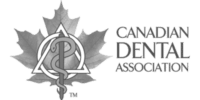TMJ (Temporomandibular Joint Syndrome) Instructions
Helpful hints for a stiff, sore jaw
When the muscles that move your jaw do not work together correctly, they may become tired and cramped, and your jaw may become stiff and sore, making chewing, yawning or laughing painful. If this happens, give your jaw plenty of rest, moist heat, gentle exercises and avoid stressing it. Here’s a good basic program:
Diet:
Eliminate foods that are difficult or painful to chew or require you to open your mouth wide, such as apples, carrots, nuts, hard candy and hard rolls. You may want to prepare some of these foods especially so they will not require as much work for your jaw joints and muscles. For example: applesauce or shredded carrots are easier to chew than raw apples or carrots. This diet will give your jaw muscles time to rest and repair themselves.
Changing Your Resting and Sleeping Habits:
Whenever you lie down to sleep or just to rest for a while, avoid stressing your jaw joints by lying on your back rather than on your stomach or side. This prevents your jaw from being pushed to one side, something that can aggravate your pain. You can also try using a single flat pillow instead of a few flat ones or one thick pillow. A flat pillow will curve your neck less and is easier on the muscles of your jaw, neck and upper back.
Changing Harmful Oral Habits:
1) Do you chew pencils or your fingernails?
2) Do you bite your lips?
3) Do you clench or grind your teeth or tighten your jaw muscles when you drive in traffic or are in other stressful situations?
Habits like these in which a person expresses anxiety or tension by tightening up muscles are common although most people are unaware of them. Furthermore, once someone does become aware of a habit, it may be difficult to break because it has evolved over a long time.
The first step in breaking oral habits is to recognize what they are and when and how they occur. Some physicians have their patients remind themselves, “lips together, teeth apart”, which is the normal resting position of the jaw, with the teeth not quite touching. The idea is to relax your jaw muscles as soon as you’re aware that they are tight or that you are grinding or clenching your teeth. When you become accustomed to noticing when you are tense, you can begin to break the habits and help alleviate the pain and discomfort that go with them.
Moist Warm Heat:
Heat a towel by holding it under running hot water and wring it out until it is damp. If you have a microwave oven, try using it to heat a damp towel. Set the timer for 15 seconds. If that does not get the towel hot enough, increase the setting gradually until the towel is hot, but not too hot to handle. When the towel has cooled enough so that you can handle it comfortably, apply it to the painful side of your face for about 15 minutes. For best results, do this four times a day; morning, before lunch, before supper and before going to bed. This may decrease the pain and stiffness.
Exercises:
Certain exercises can help you relieve the pain that comes from tired, cramped muscles. They can also help if you have difficulty opening your mouth. The more often you do these exercises, the more you will relax the muscles that are painfully tense. Try these exercises in front of a mirror on rising, before meals, and on going to bed.
1) Open your mouth as wide as possible and then close it. Try to open your mouth far enough to allow you to fit the knuckles of your index and middle fingers between your upper and lower front teeth. Do 20 repetitions for 3 cycles (Total 60)
2) Place your thumb under your chin and your forefinger over your chin, below your lower lip. Push upward with your thumb using moderate force and slowly open your mouth wide against this resistance. Close your jaw. Do 20 repetitions for 3 cycles (Total 60)
3) With your thumb and forefinger in the same position, push against your lower jaw as you slide it forward. Avoid grinding your teeth and slide your jaw only as far as you can without producing pain. Do 20 repetitions for 3 cycles (Total 60). If you find that your fingers exert too much pressure on your chin, push your chin against the palm of your hand instead.
4) Next, place your palm on the side of your jaw and open your mouth diagonally against resistance of your hand. Do 20 repetitions for 3 cycles (Total 60) on each side. If these exercises increase your discomfort or make it harder for you to open your mouth, stop the exercises and consult your doctor.










